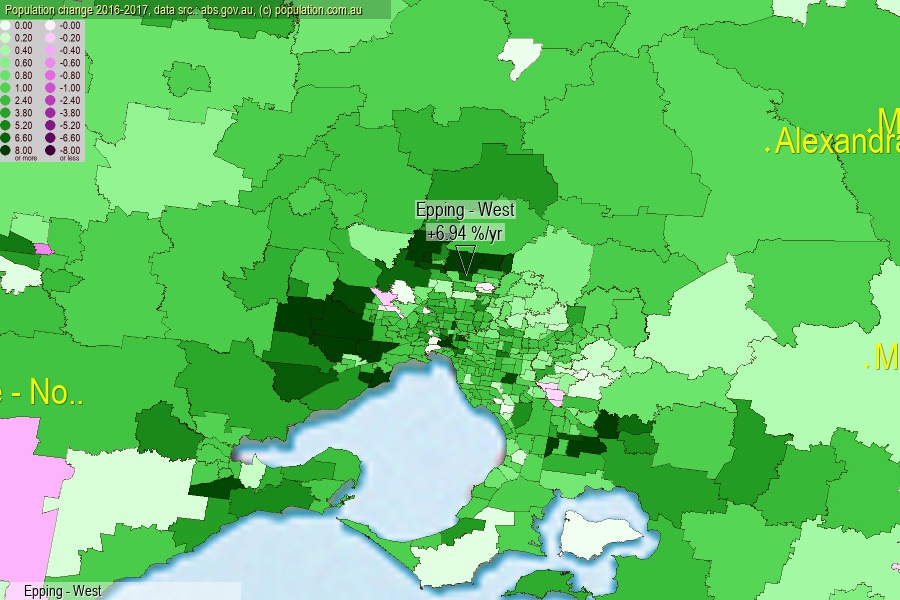 population.com.au
population.com.auLast official estimated population of Epping - West (as Statistical Area Level 2) was 12 281 people (on 2017-06-30)[2]. This was 0.05% of total Australian population and 0.191% of VIC population. Area of Epping - West is 7.40 km², in this year population density was 1 659.59 p/km² . If population growth rate would be same as in period 2016-2017 (+6.94%/yr), Epping - West population in 2025 would be 21 007. [0]



Click to enlarge. Epping - West is located in the center of the images.
Population [people], population density [p./km²] and population change [%/year] [2]
View borders » (new window) [4]
[2001-2002] -1.53 %/Yr.
[2002-2003] -1.55 %/Yr.
[2003-2004] -2.52 %/Yr.
[2004-2005] -0.65 %/Yr.
[2005-2006] +0.33 %/Yr.
[2006-2007] +123.34 %/Yr.
[2007-2008] +67.63 %/Yr.
[2008-2009] +43.46 %/Yr.
[2009-2010] +21.51 %/Yr.
[2010-2011] +57.44 %/Yr.
[2011-2012] +14.40 %/Yr.
[2012-2013] +15.25 %/Yr.
[2013-2014] +11.87 %/Yr.
[2014-2015] +11.61 %/Yr.
[2015-2016] +10.03 %/Yr.
[2016-2017] +6.94 %/Yr.
[0] Calculated with linear interpolation from officially estimated population
[1] Read more about SA2 and Australian Statistical Geography Standard (ASGS) on abs.gov.au
[2] Population data from Australian Bureau of Statistics (Population and density: 2017; change: 2016-2017)
[3] Digital Boundaries: Australian Statistical Geography Standard (ASGS) 2016.
[4] Border coordinates are simplifyed using Ramer-Douglas-Peucker algorithm.